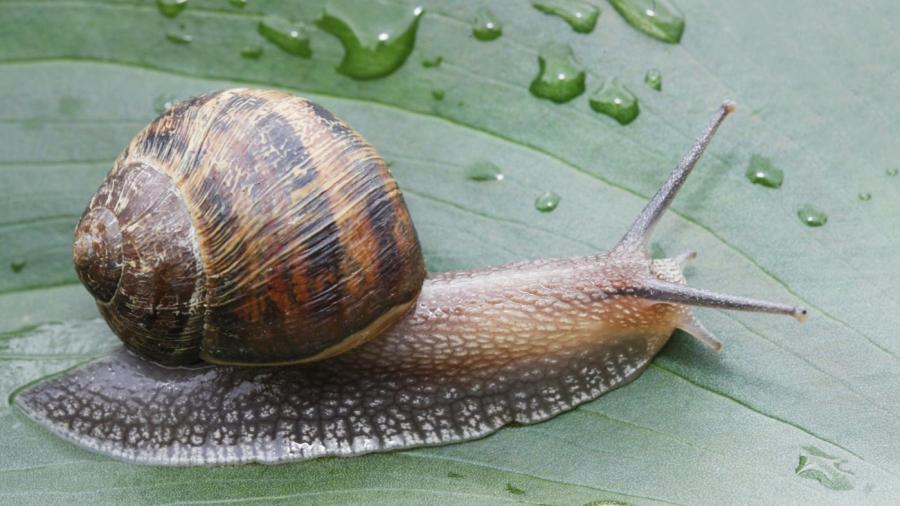How Do Snails Move?

To move, snails make a complex series of wave-like movements along their entire body, which propels them forward. Most of a snail’s body actually consists of a large foot, and so the part of the body touching the floor is known as the sole.
As the snail moves forward, mucus comes out of a gland located at the front end of the foot, and the snail moves across this gooey substance. The mucus cuts down on the amount of friction that the ground causes for the snail, reducing contact to the point that a snail can crawl along the edge of a knife and not suffer from any cuts. Studies looking into whether the mucus is a requirement for movement are inconclusive, but the mucus clearly helps the movement go more quickly and easily.
Different snails have the ability to move at different speeds. For example, the Roman snail hits top speeds of about 2 1/2 inches per minute, while the pond snail is one of the faster species, hitting top speeds of almost 5 inches per minute. The bladder snails are a group of freshwater species that are capable of hitting speeds of up to 8 inches per minute.





